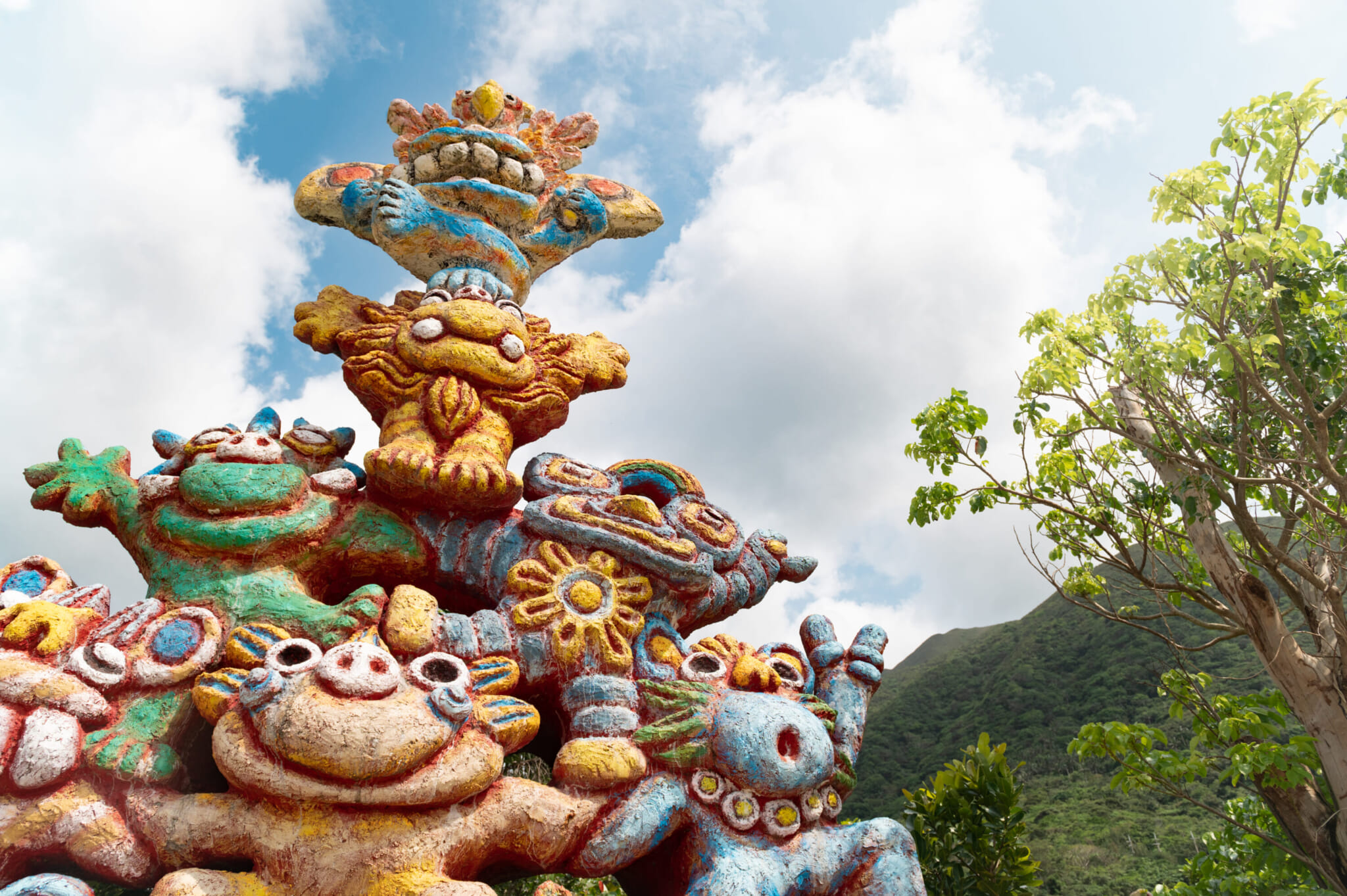As Tokyo enters late spring, Japan’s southernmost prefecture of Okinawa has already begun to enjoy weather that the capital typically doesn’t see until summer. Okinawa’s islands, which are fairly easy to access despite some being rather remote, offer those in more northerly regions a chance to soak up some sun ahead of time.
Taking time out from the hustle and bustle of the city we love, we made our way from Tokyo to Ishigaki Island and neighboring Taketomi Island in search of sun, sand and stunning scenery.
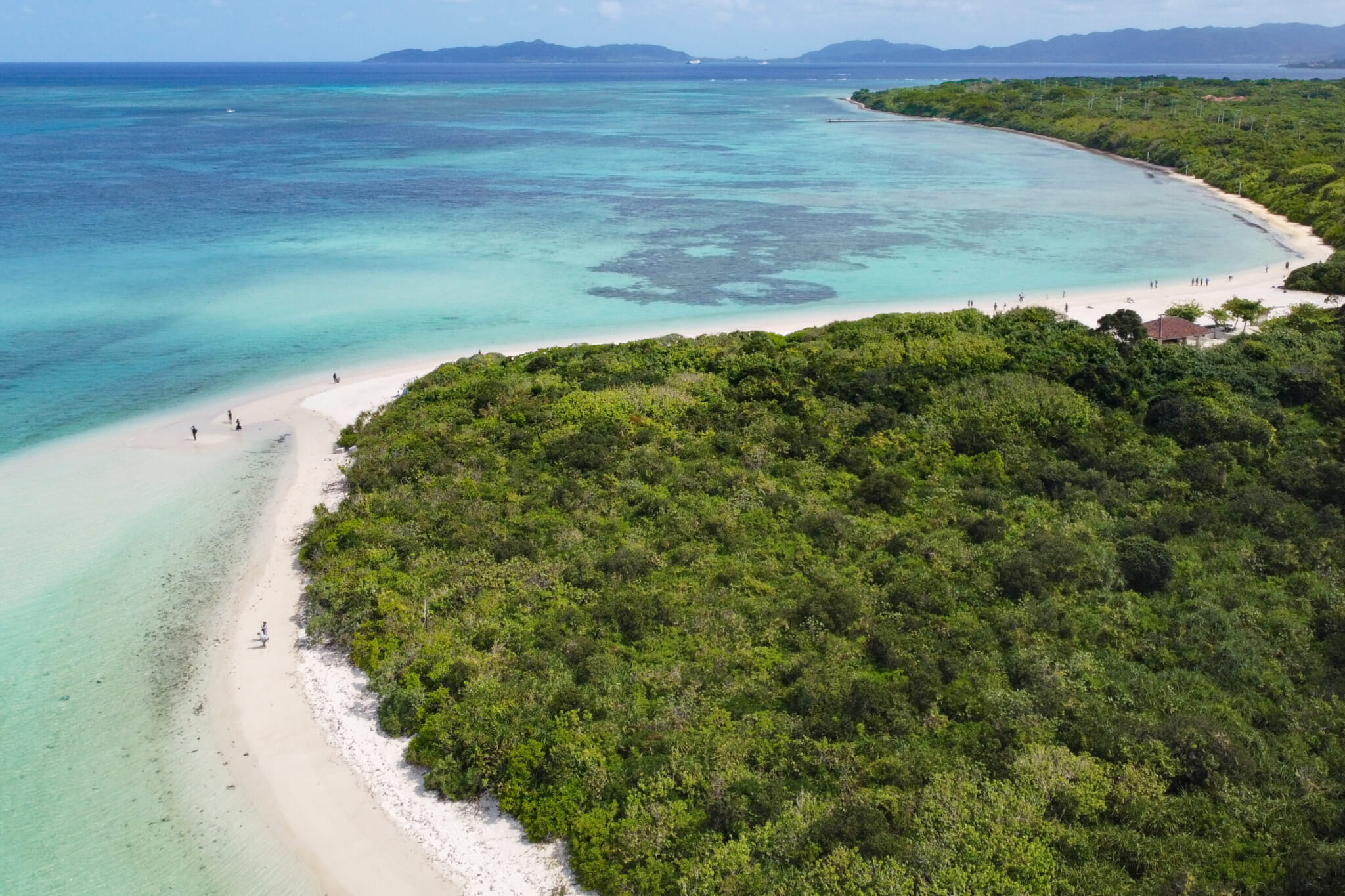
Getting Off the Ground
Ishigaki, one of Okinawa’s most far-flung islands, can only be accessed from the mainland by air. There are, however, plenty of flights connecting Narita International Airport with Painushima Ishigaki Airport, with low-cost carriers such as Peach making the trip relatively reasonably priced. At around three hours, the flight from Tokyo to Ishigaki is an easy one even for novice flyers.
When planning your trip, bear in mind that many conveniences common in big cities, such as easily accessible public transport, do not exist on Ishigaki. While there are taxi and bus services, they’re less frequent, so to get the most out of your time on the island, it’s a good idea to rent a car or scooter. Of course, valid driving permits are required. Be sure to check in advance that your license is acceptable.
As for accommodation, there are plenty of options to suit all manner of budgets, from luxury hotels like the Intercontinental to self-contained apartments with parking like Karchibe Ishigaki. Visitors should have no trouble finding somewhere to stay that is well aligned with their style of travel.
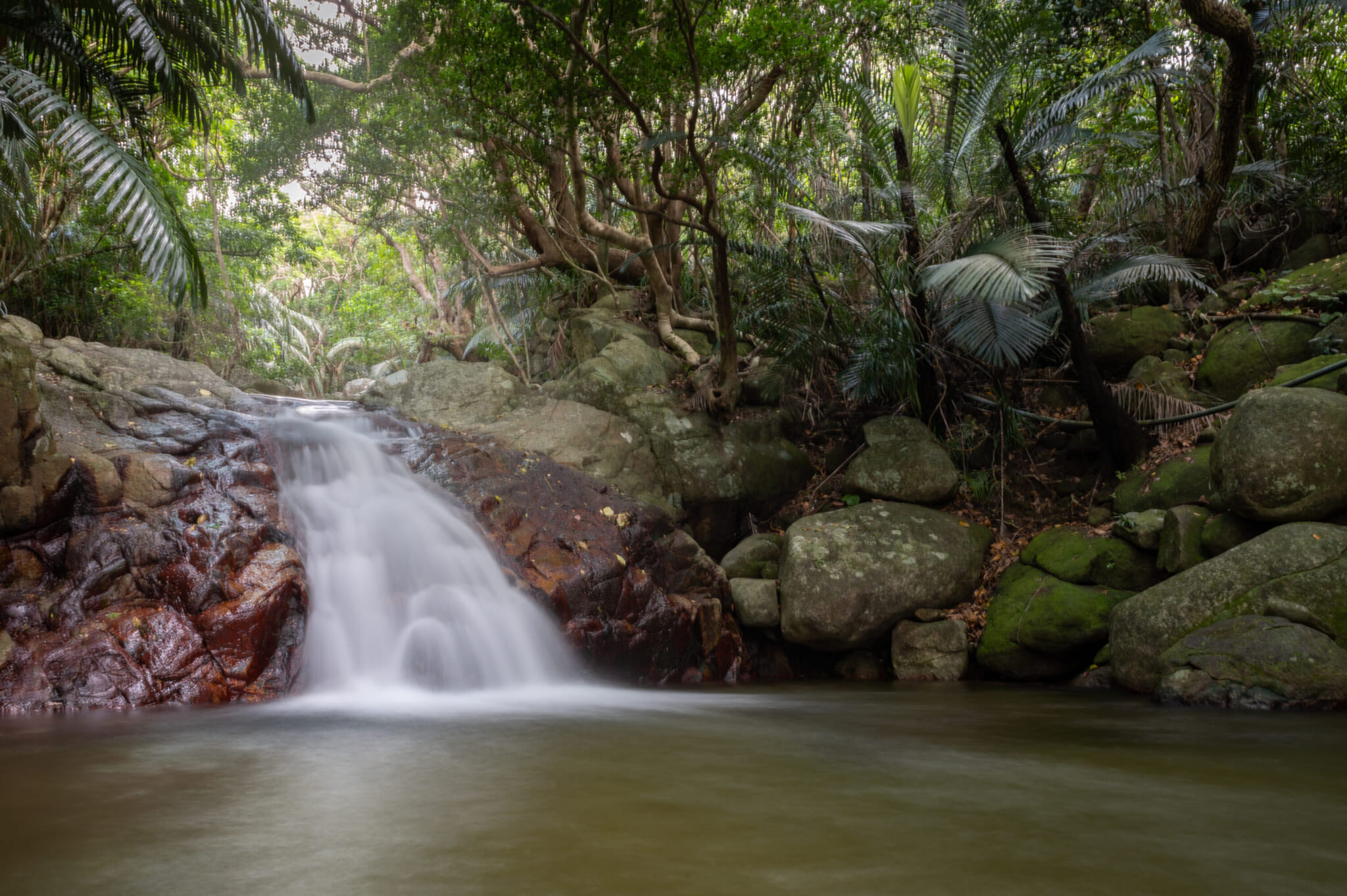
Exploring Ishigaki
Most points of interest on Ishigaki are no more than half an hour apart by car. Unlike Tokyo, however, where you can wander with no particular aim and happen upon something fascinating by chance, Ishigaki requires a little bit of local know-how. This is because some locations, like the otherworldly Arakawa Falls, are completely hidden from view.
Marked by little more than a handful of parking spaces on the side of the road, Arakawa Falls is a swimming hole at the base of a waterfall surrounded by thick rainforest. A staircase almost overrun by nature leads down to the waterfall, where you can ease into the cool mountain water or simply enjoy the view from one of the large boulders nearby.
Ishigaki further flexes its natural beauty with the Blue Cave. Located along the island’s shoreline, the Blue Cave is a naturally occurring rock formation that at low tide becomes a bright blue lagoon separated from the nearby ocean. Blue Cave tours, which include a guided tour of the cave in Japanese and a snorkeling experience on a nearby reef, can be booked, but the location is free and open to the public should you wish to explore on your own. Do be aware, though, that sea life does remain in the Blue Cave at low tide and can include everything from the cutest clownfish to the venomous lionfish.
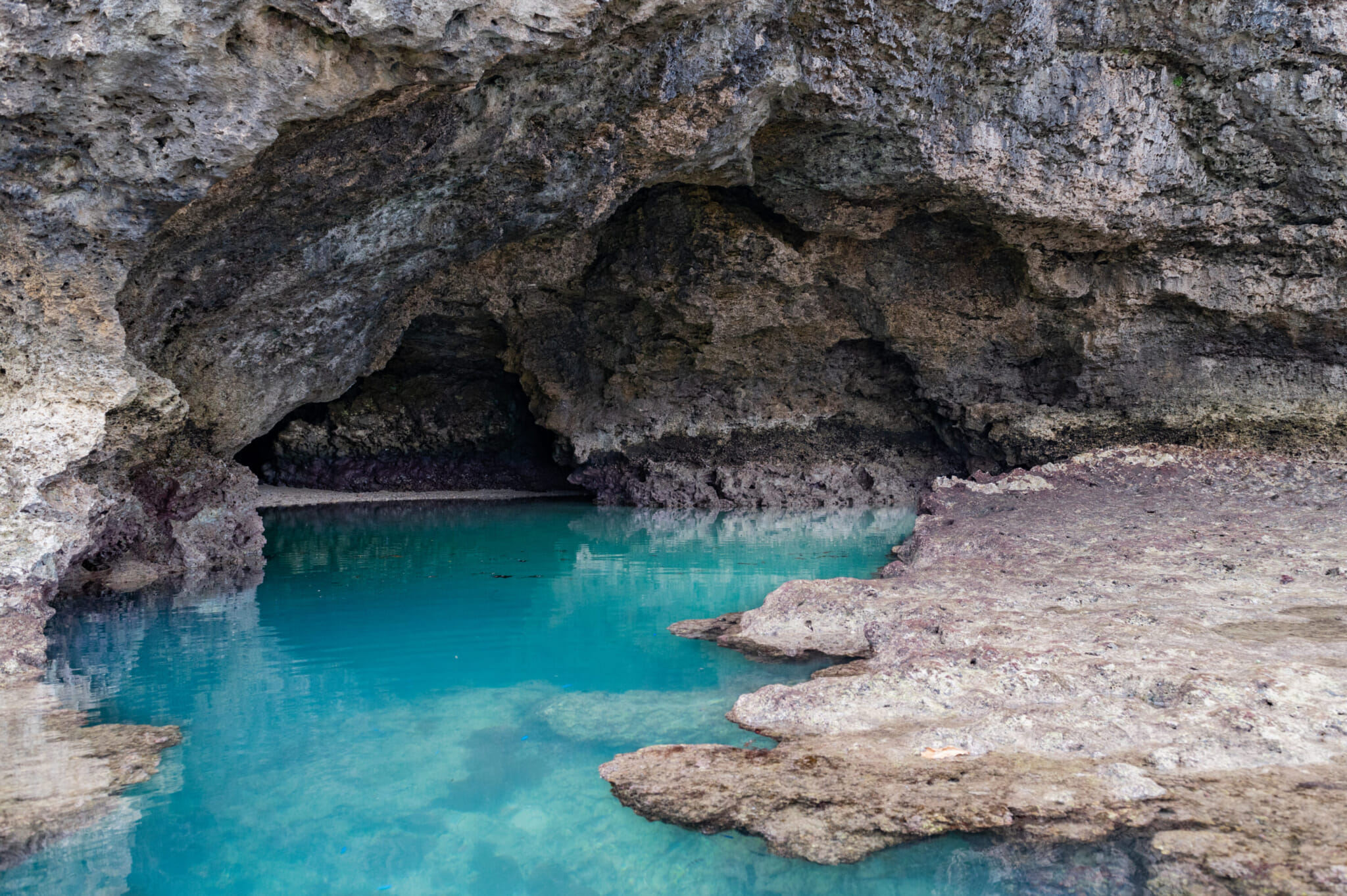
While cruising around Ishigaki, you’ll likely notice splashes of color, which sometimes come in the form of ornamental shisa. Often described as a cross between a lion and a dog, shisa are typically fashioned from stone or terra cotta, and in Okinawan mythology, are believed to ward off evil. They’re often personalized with colorful brushstrokes.
Paying homage to these spiritual guardians is the Yoneko-yaki Pottery Studio Shisa Park. Within the park, which is free to enter, towering shisa of diverse color and design sit amid the natural landscape. Right out front, the Yoneko-yaki Pottery Studio is the perfect place to pick up your very own ornamental shisa on the way out.
Seeing the sights of Ishigaki is a surefire way to work up an appetite, and your options for eating are as plentiful as the island’s spectacular spots to admire. That said, there are a couple of standouts: Matsumutu House and Bonnie Blue Fish and Chips.
For those keen to immerse themselves in the culinary traditions of Ishigaki, Matsumutu House offers hearty bowls of traditional Yaeyama soba in a quaint and homely atmosphere. Meanwhile, the Bonnie Blue Fish and Chips food truck has become a favorite of locals and tourists alike by bringing Japan-infused tastes of the UK, Korea and even Brazil to Ishigaki. Owned and operated by Scottish expat Sam Galbraith and his wife Kumi, the food truck’s laid-back dining atmosphere in the great outdoors is perfect for enjoying a meal and conversation with a knowledgeable local in either English or Japanese.
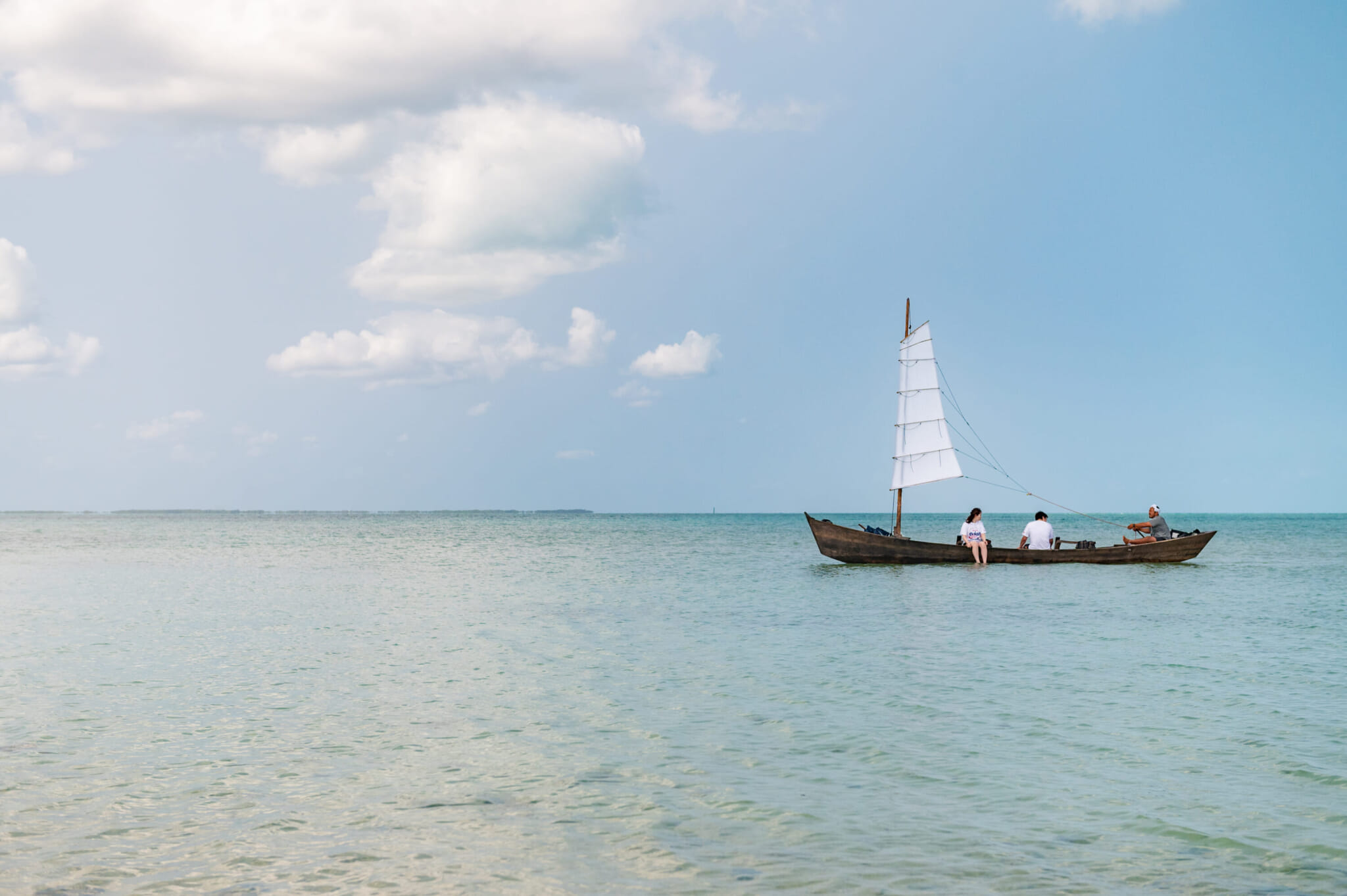
Onward to Taketomi
If you’ve made the trek to Ishigaki, it only makes sense to go a little farther and experience the nearly untouched natural beauty of neighboring Taketomi Island.
The island is located less than half an hour away by ferry, and tickets can be purchased at the ferry port on the day of travel. Service between Ishigaki and Taketomi is available nearly every hour between around 7:30am and 5pm and costs just over ¥1,500 per person round trip.
An island even smaller than Ishigaki, Taketomi can be explored on foot by the avid hiker. The best way to get around by far, though, is by bicycle. With several businesses offering a variety of rental options, from electric-assist to tandem bicycles, you’re sure to find something to suit your fancy. And you can’t beat the convenience, either, as shuttle buses will whisk you between the port and rental center at no extra cost.
After getting a pair of wheels beneath you, it’s time to pedal on over to Taketomi’s most famed location: Kaiji Beach, also known as Star Sand Beach. It’s here along this small section of coastline that, with a keen eye, you’ll be able to find tiny little stars among the sand. Although commonly referred to as star-shaped sand, these pointed pieces are the shells of microscopic sea organisms that have washed up on shore.
From here, a short walk up the coast will take you to Kondoi Beach, an area of white sand and bright blue water. Swimming is allowed here, and at low tide, visitors can wander approximately 100 meters out from the shore across an exposed sandbar.
Taketomi’s focus on tradition and island life means that infrastructure and facilities are limited, but it’s this close-to-nature style of living that gives the island its charm — a charm that can also be found at Paradise Café. An intimate eatery with an island-inspired menu of fruit-infused drinks, tropical pizza and even chili con carne, the café offers diners a break from the sun in the naturally shaded outdoor dining area. It’s the perfect way to wind down before catching the ferry back to Ishigaki in the afternoon.
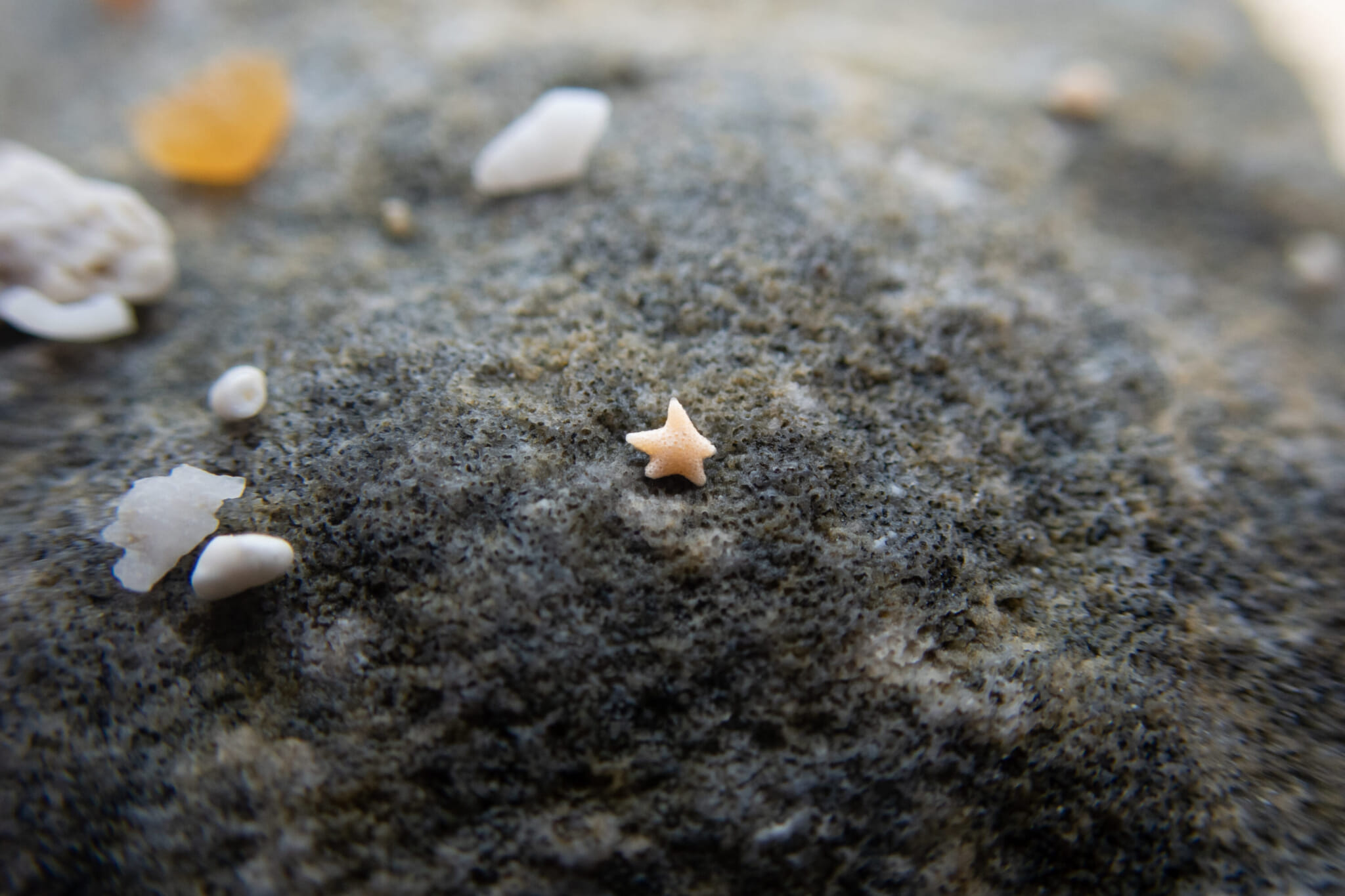
Live Your Best Island Life
There are plenty of ways to fill a day exploring the islands of Okinawa, but it’s worth noting that much of the magic of these remote locations lies in simply being present.
While seeing the sights, take a moment to appreciate just how far you are from the nearest metropolis and how rare it can be to experience such a thing nowadays. Notice the sun as it dips beyond the horizon, casting warm shades across mountains carpeted by pristine forests. Wander an empty beach as far as it will take you. Greet everyone with a smile and embrace the best of Japanese island life.

